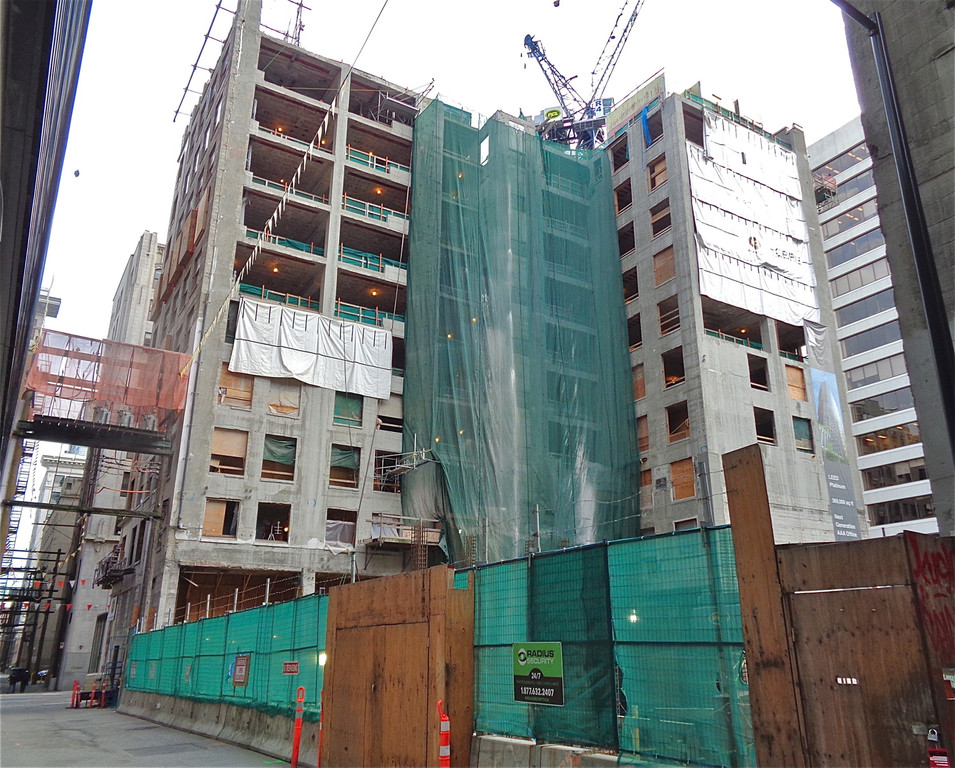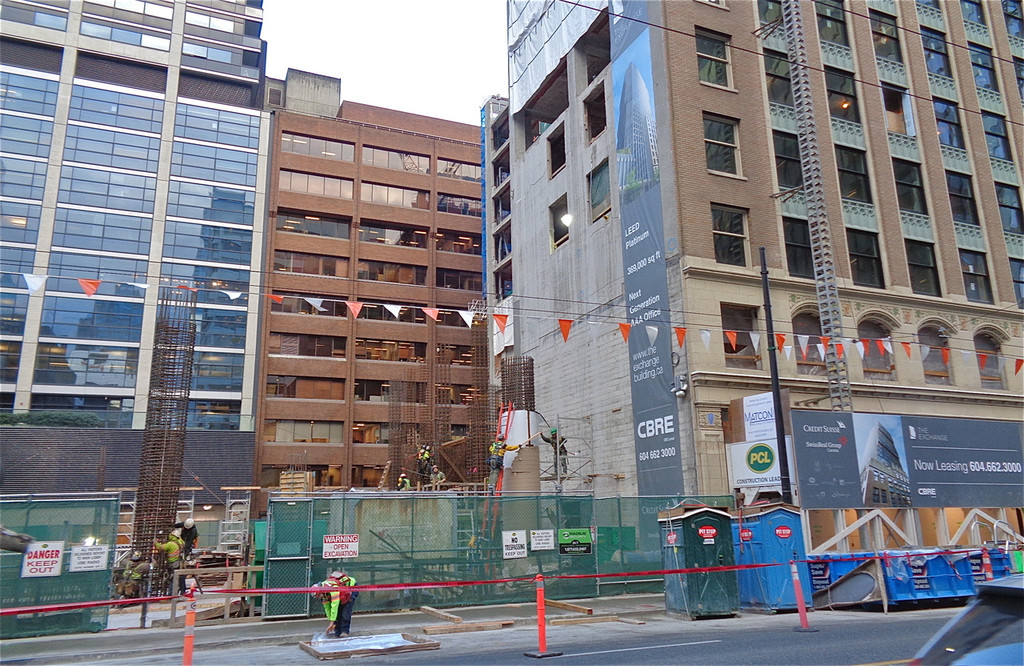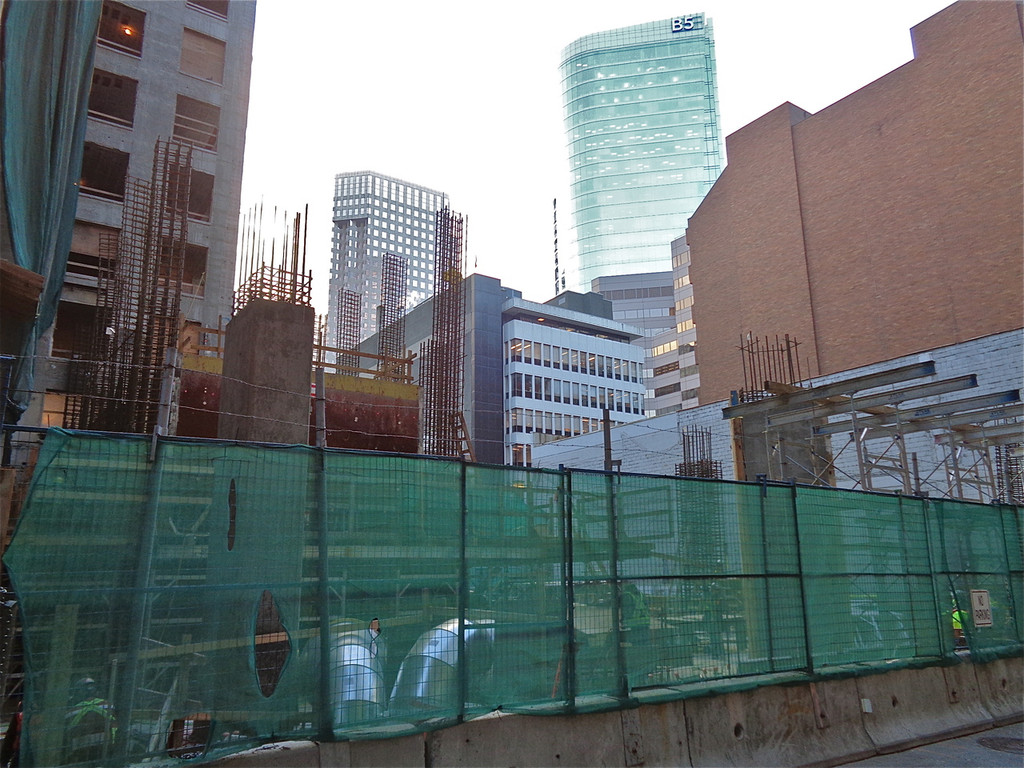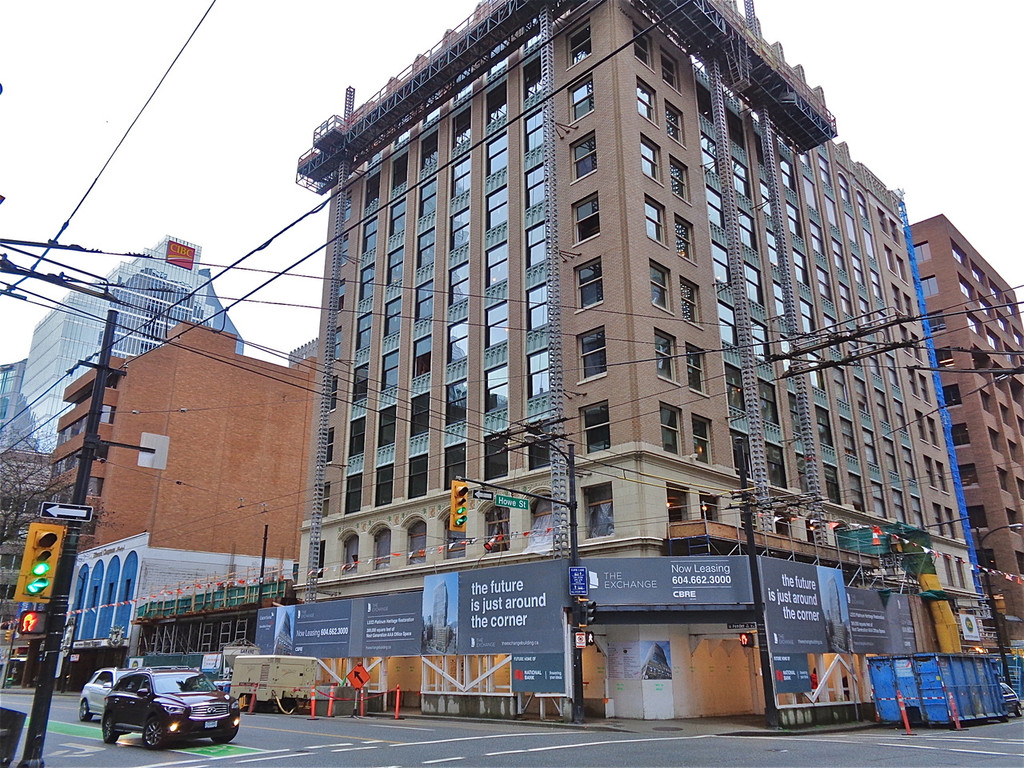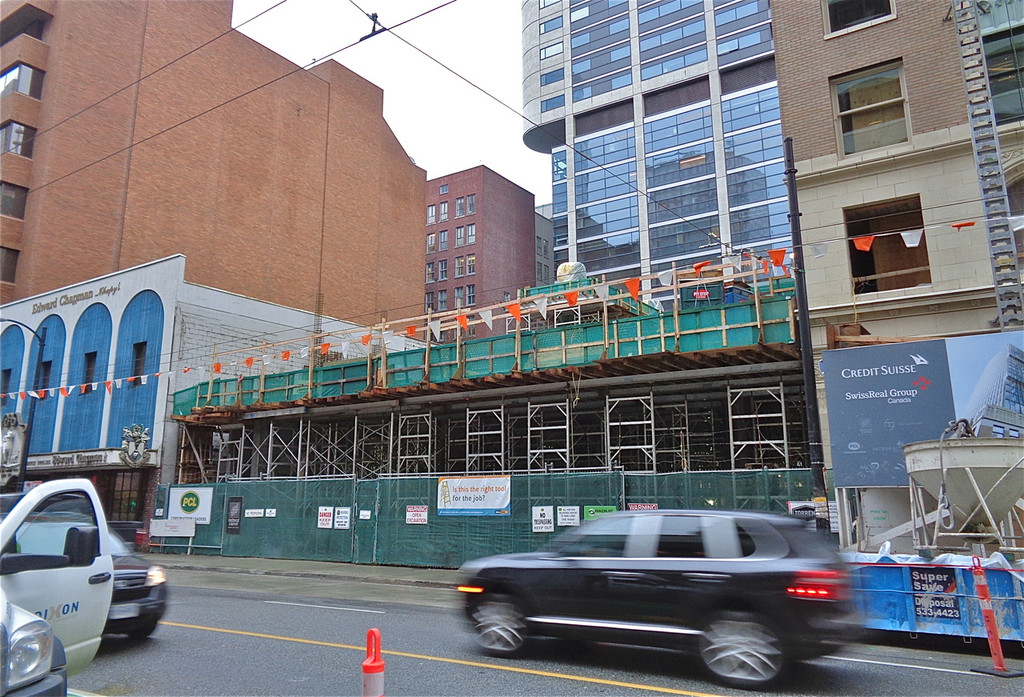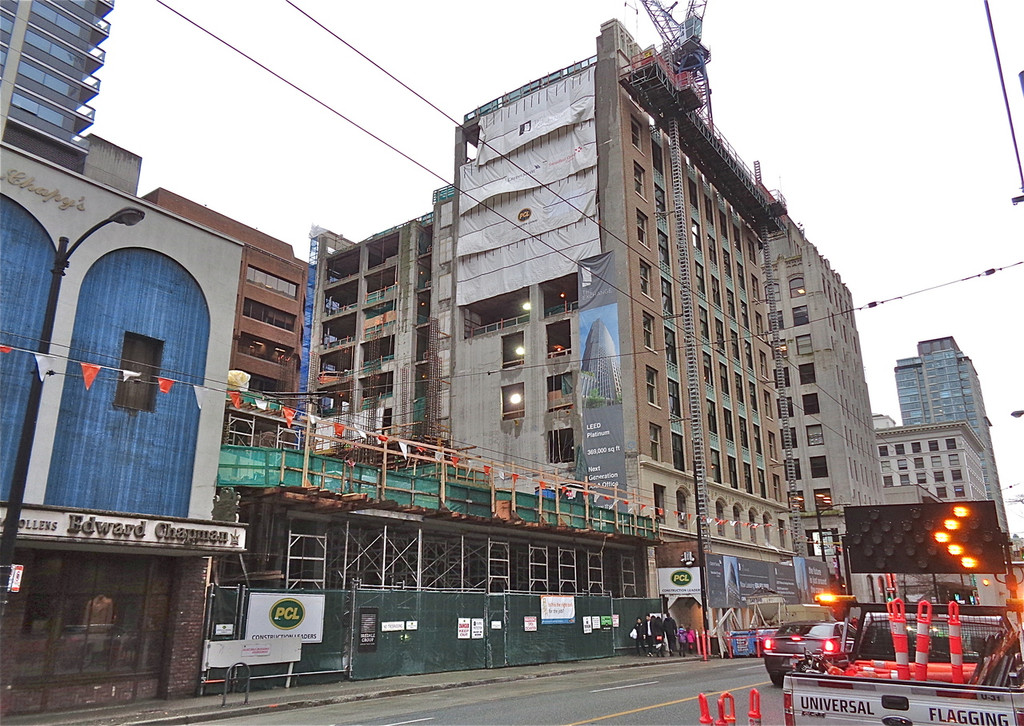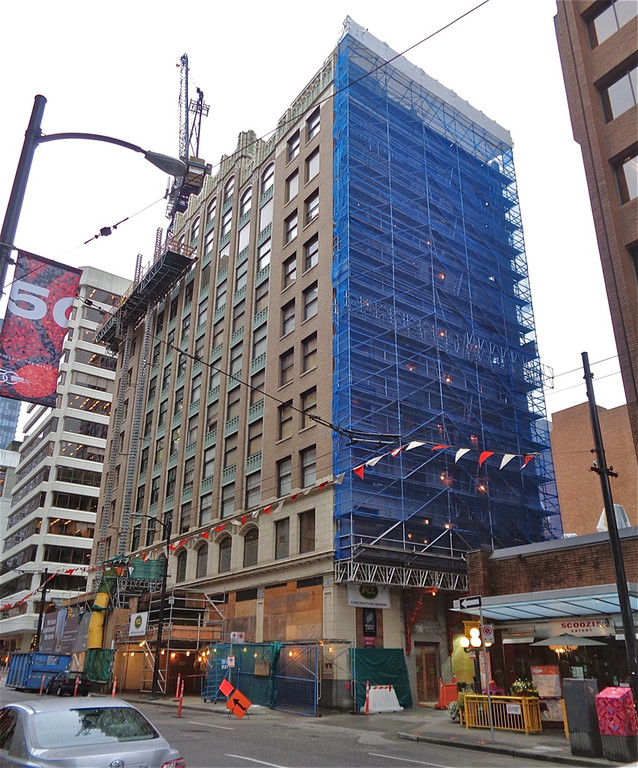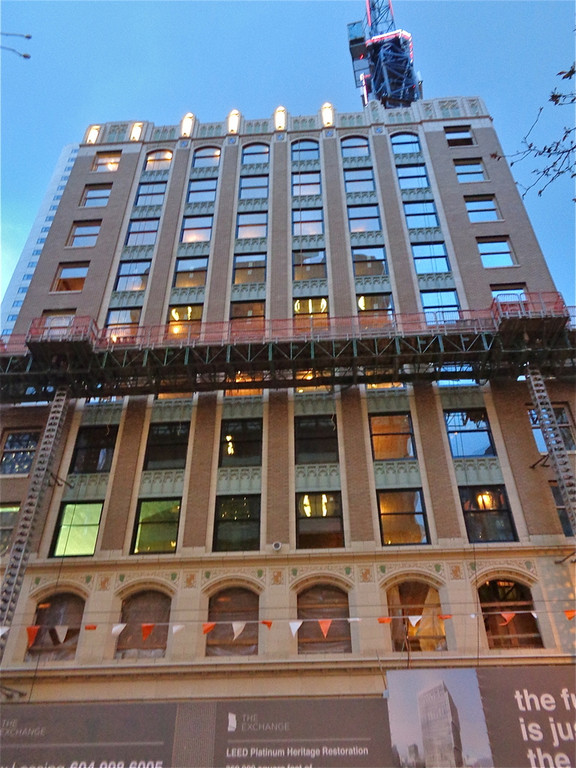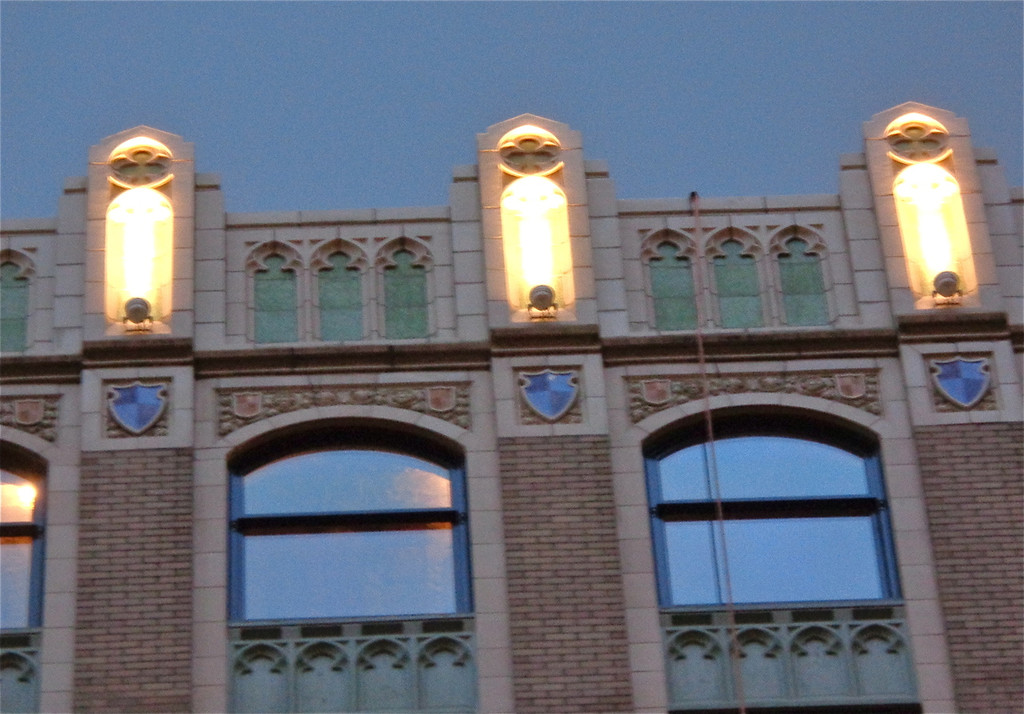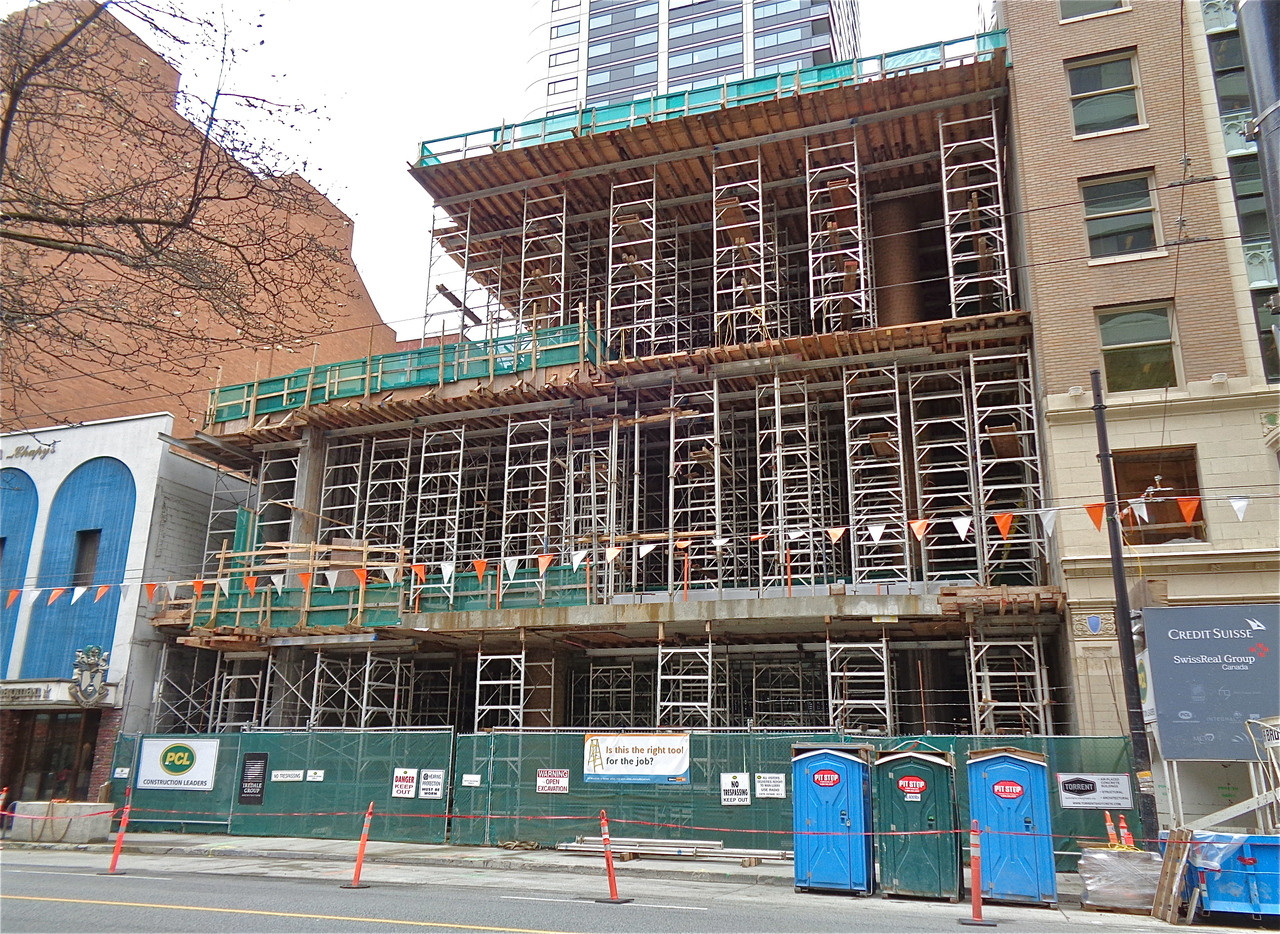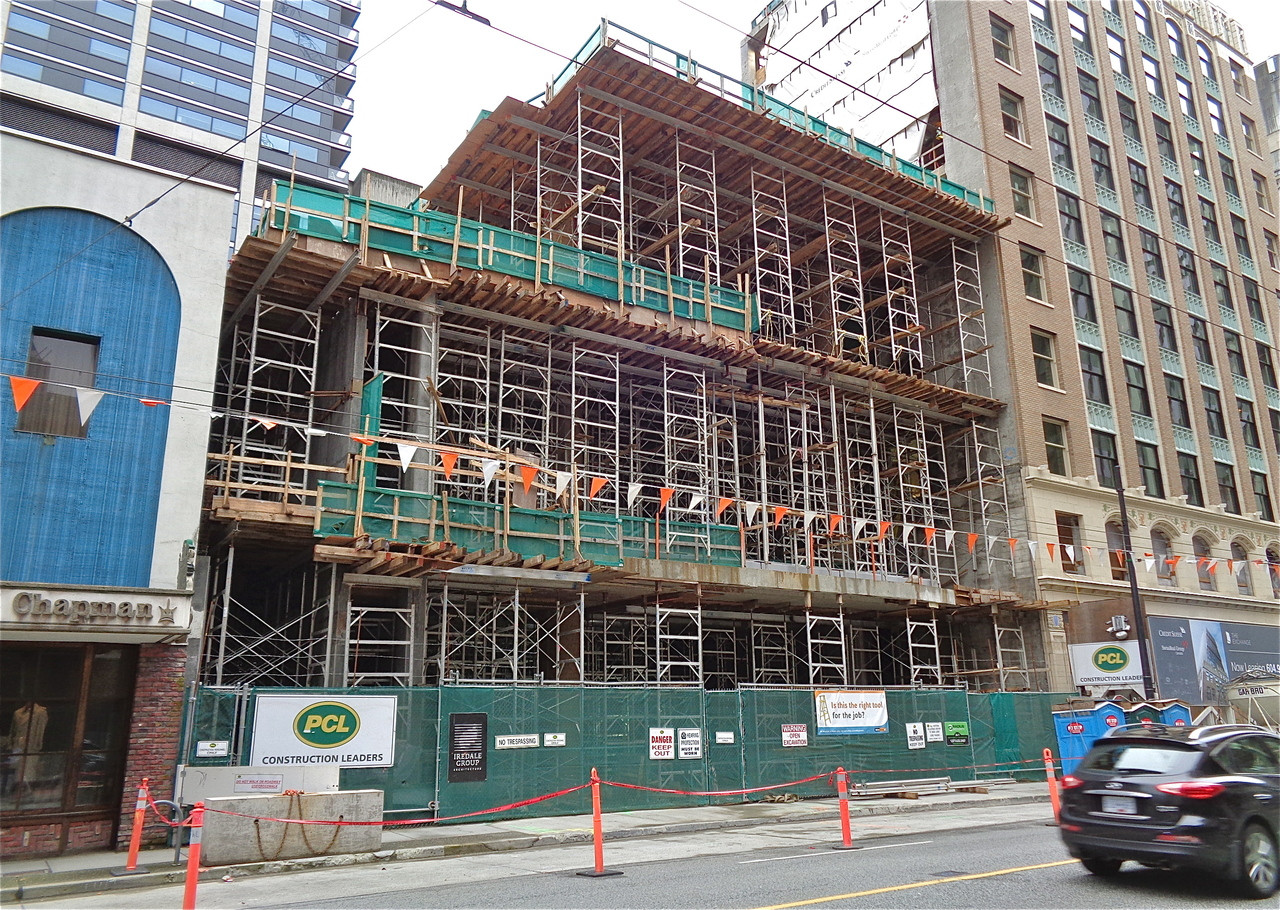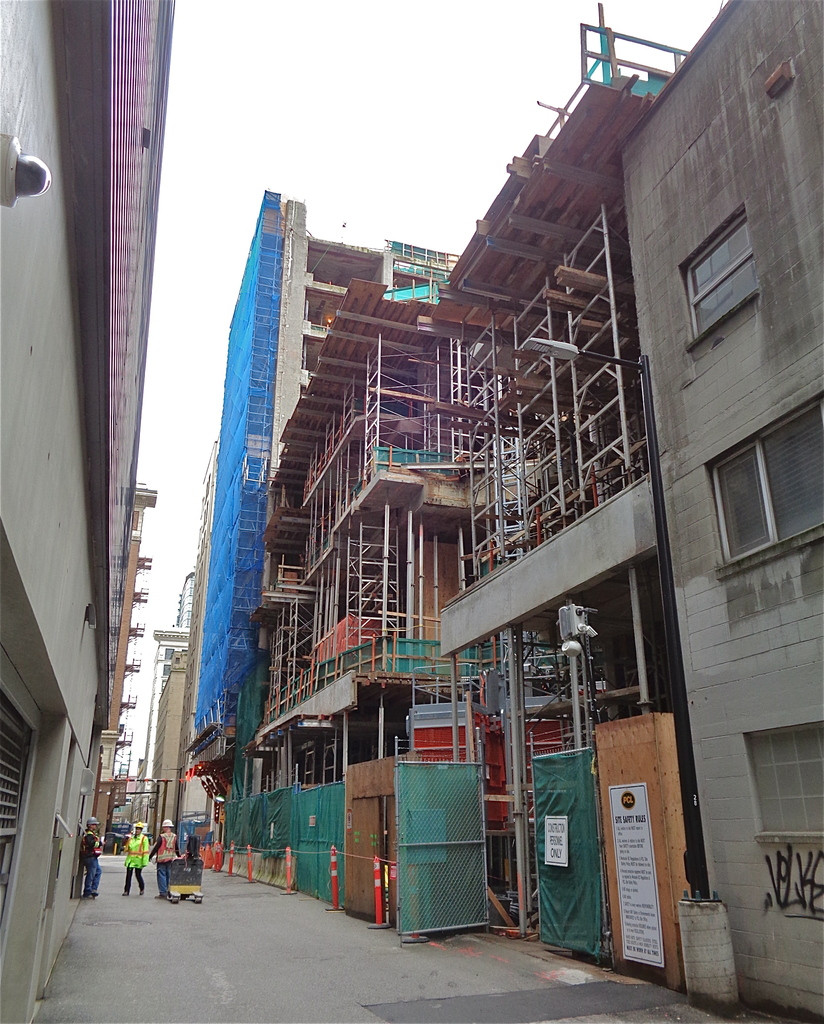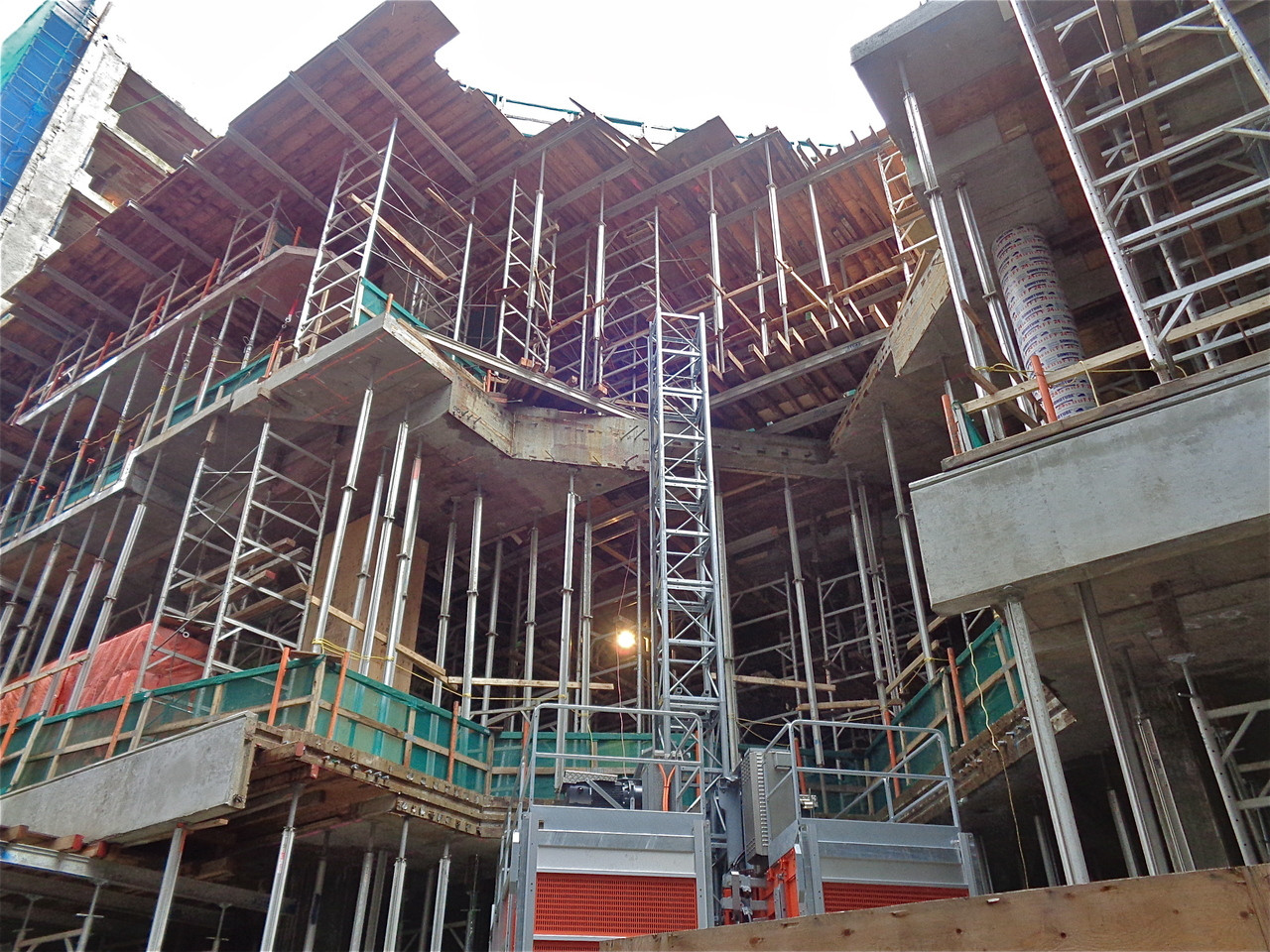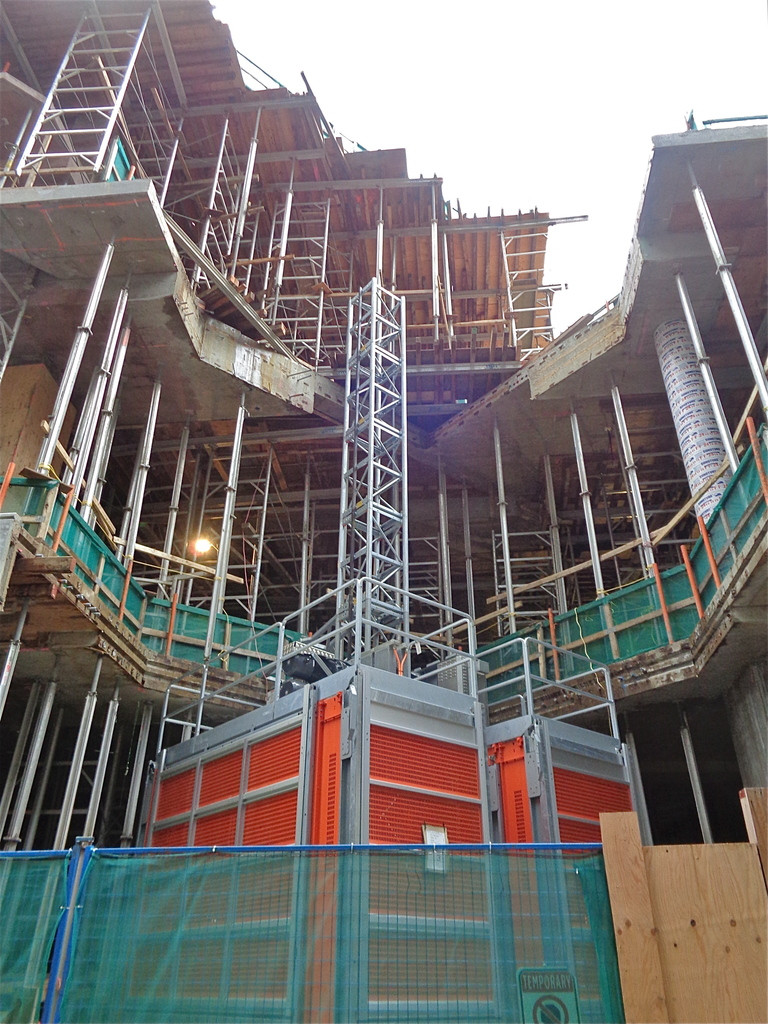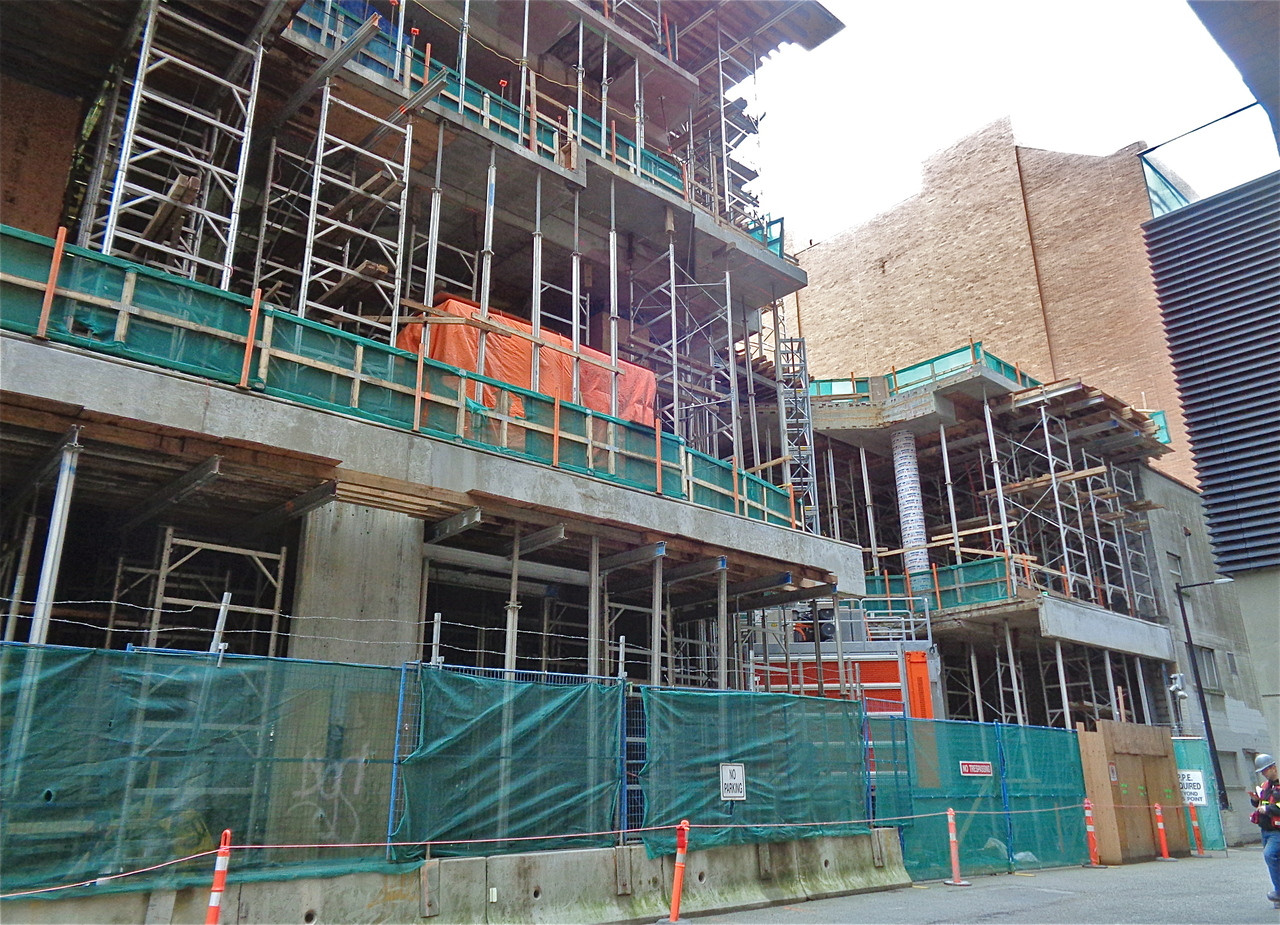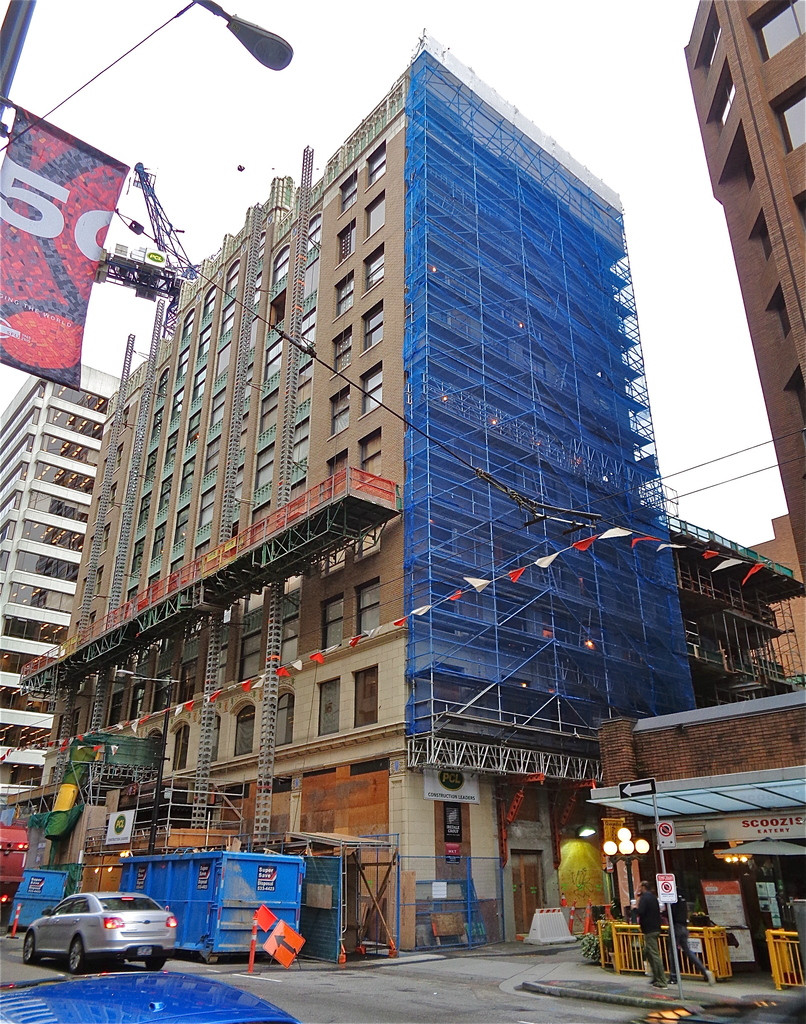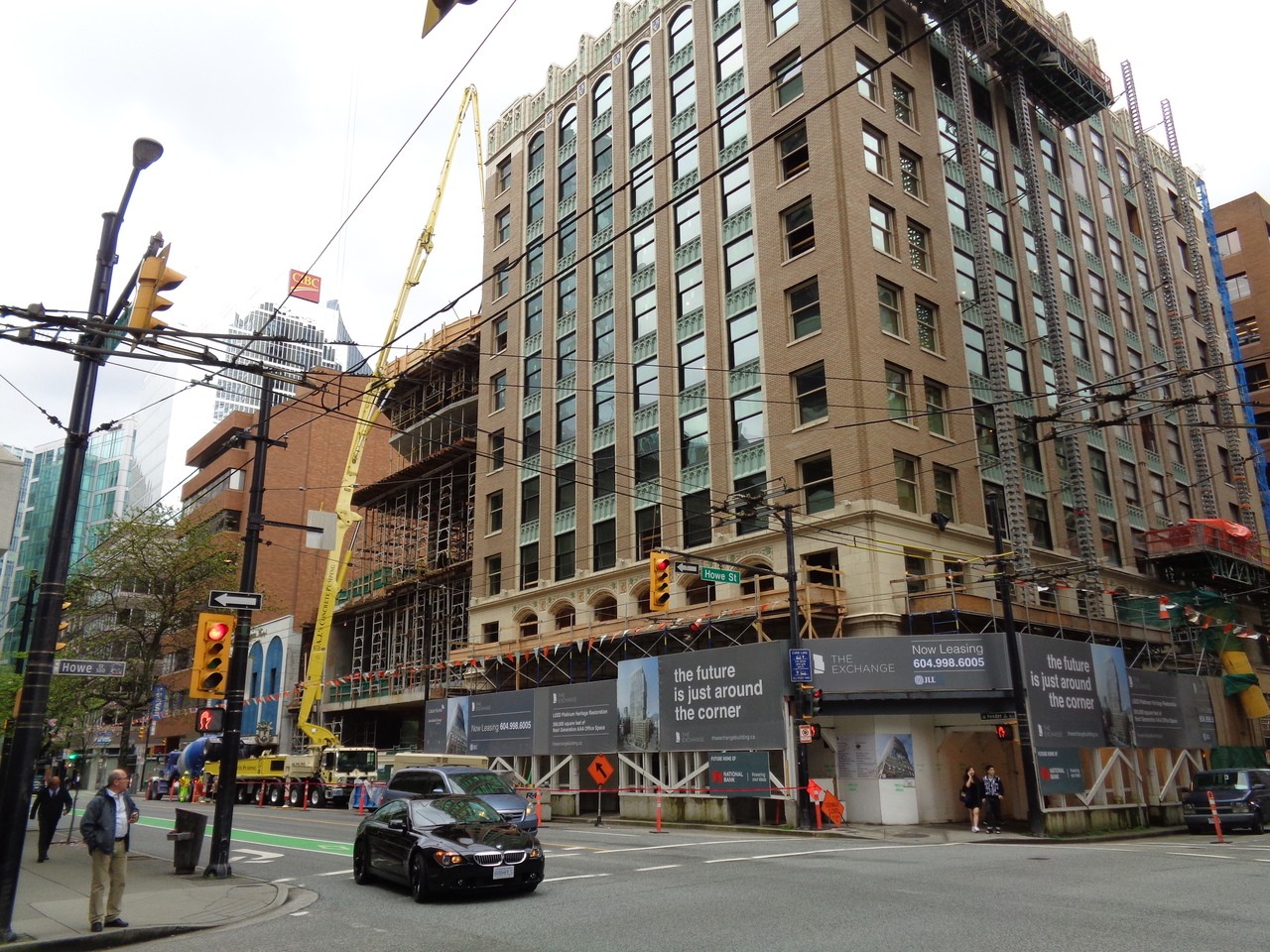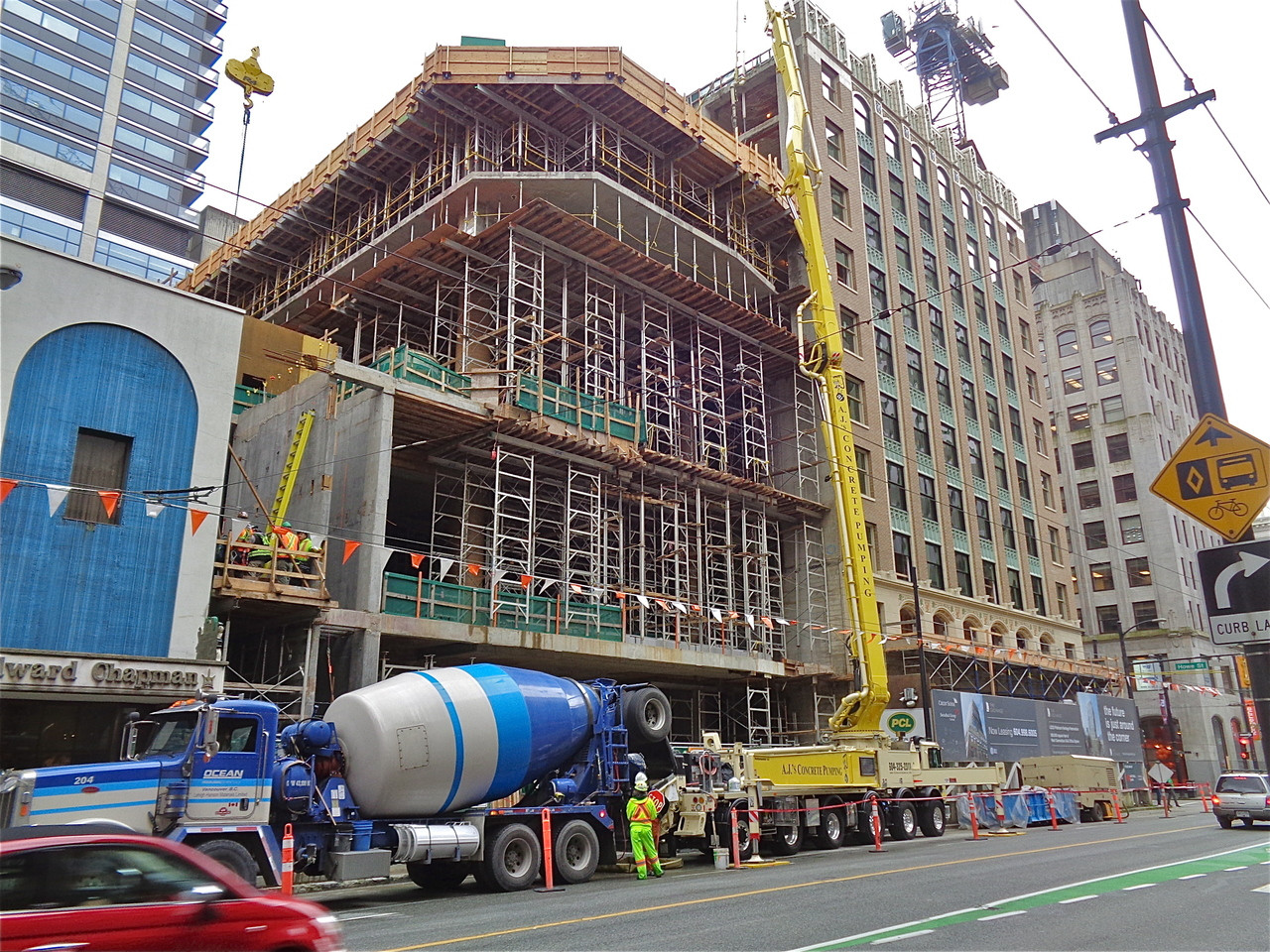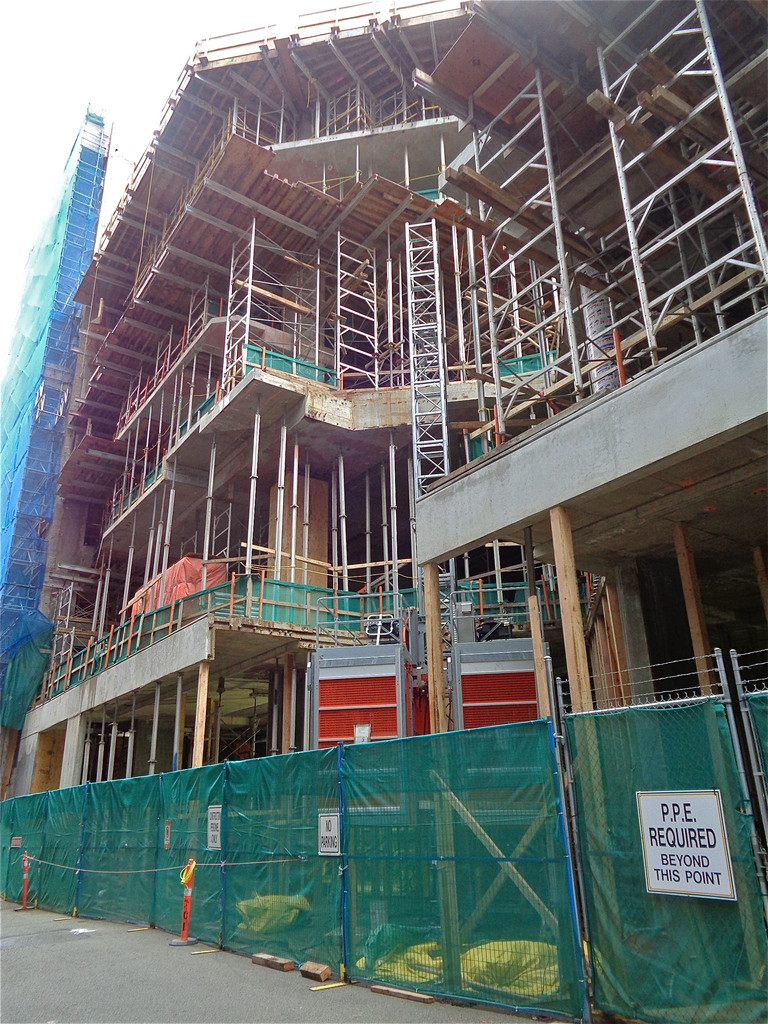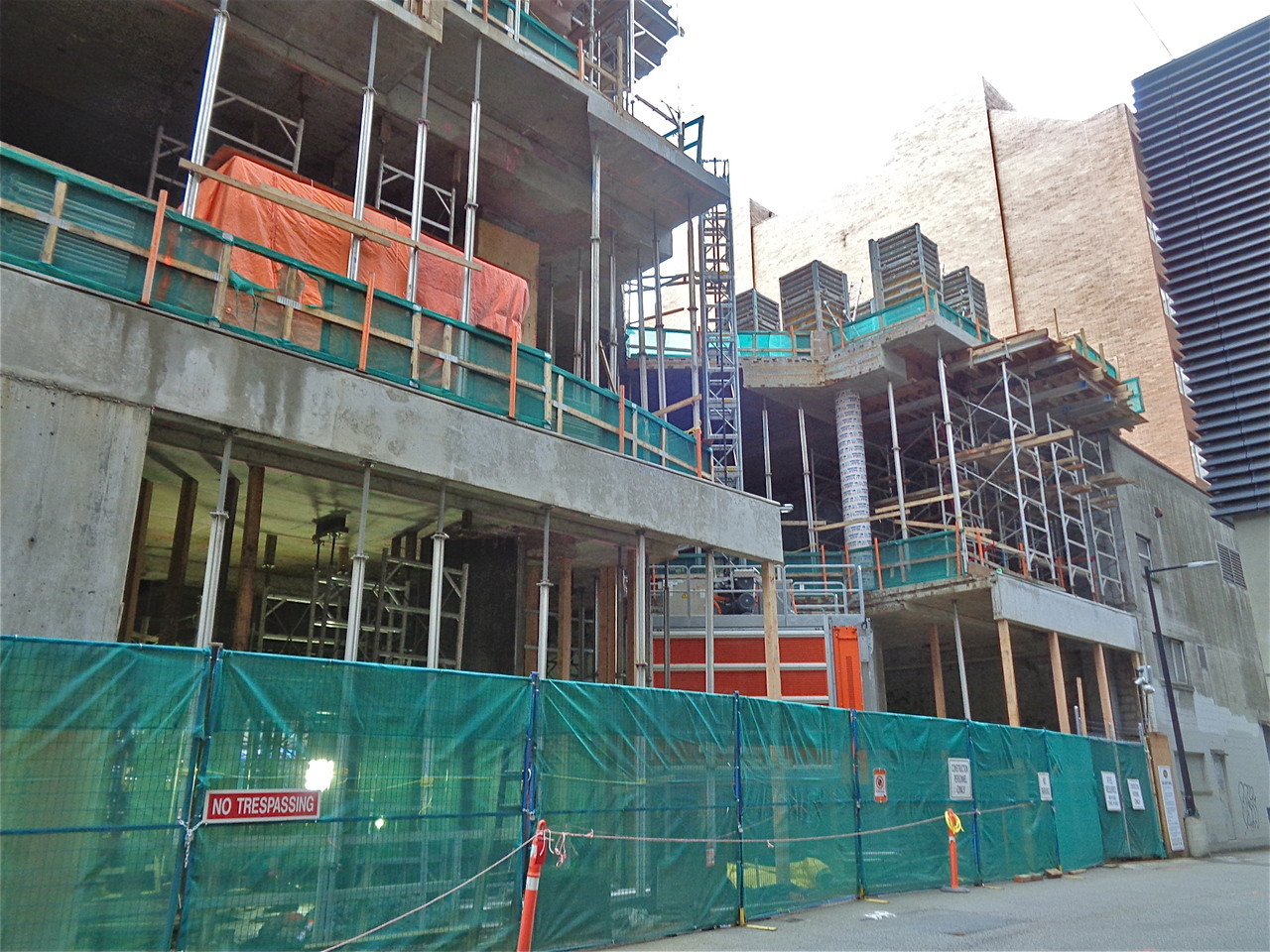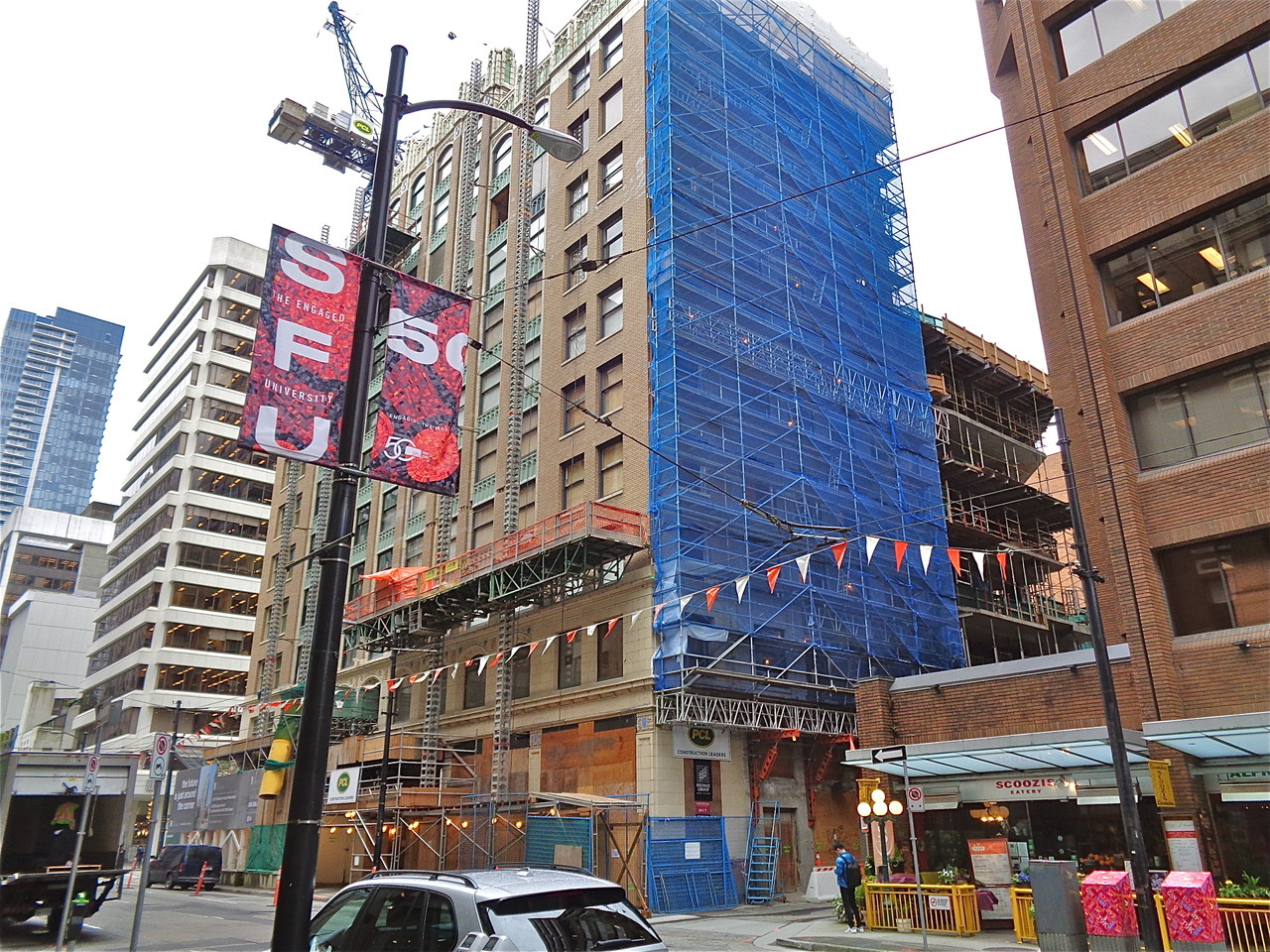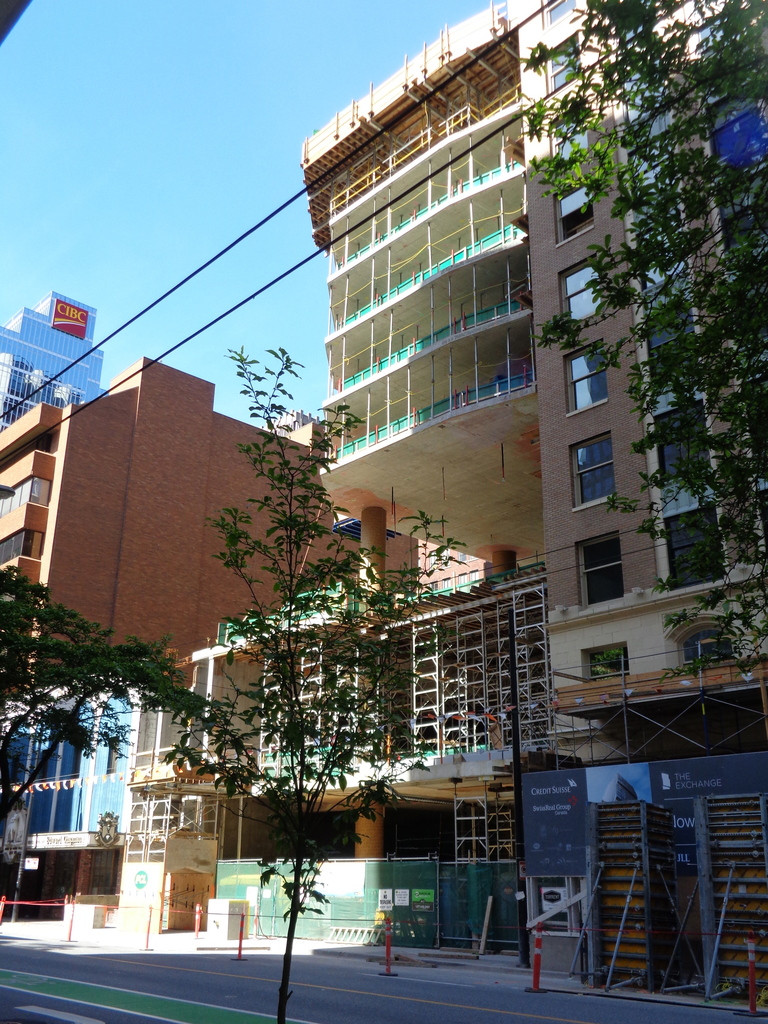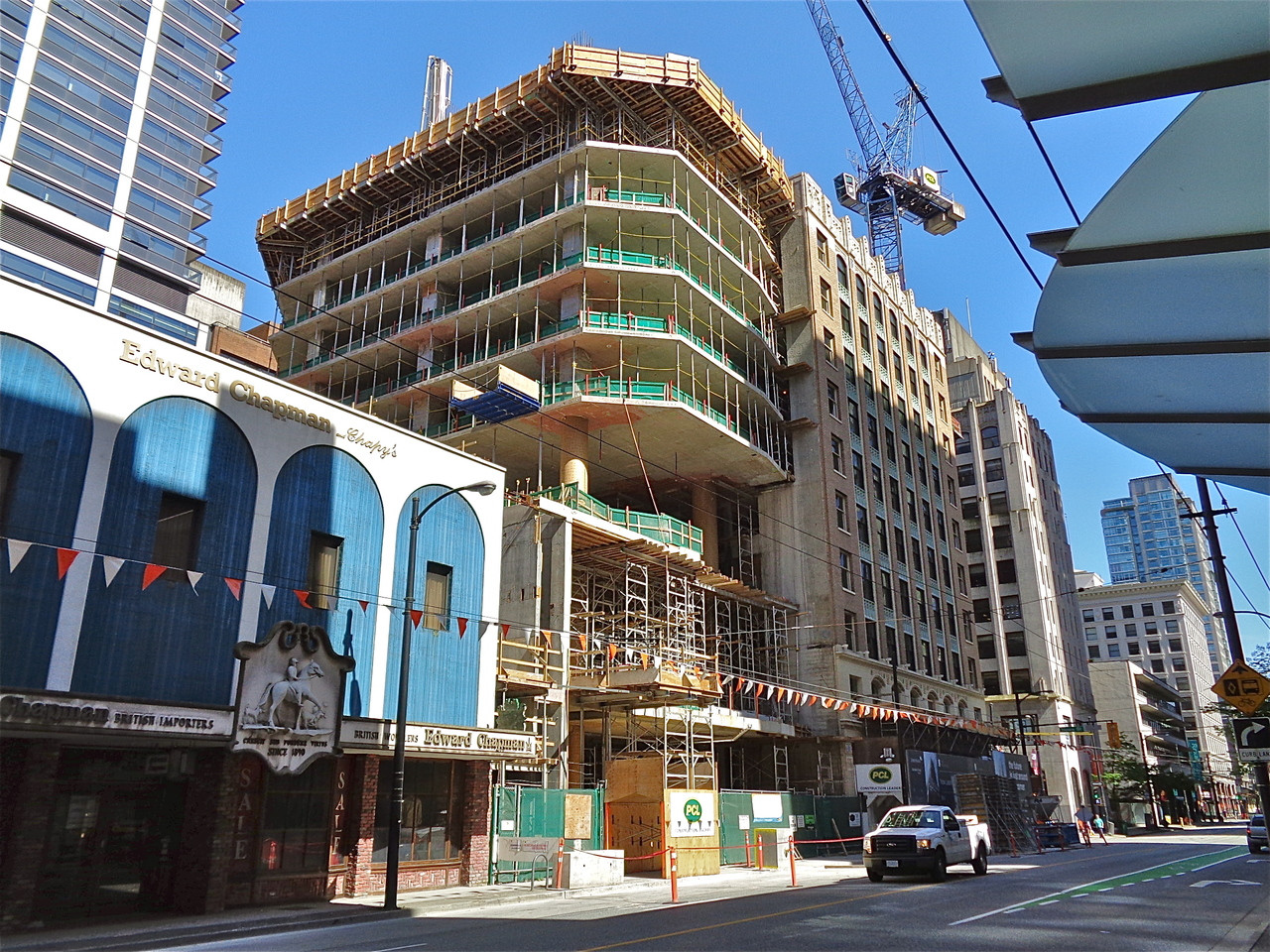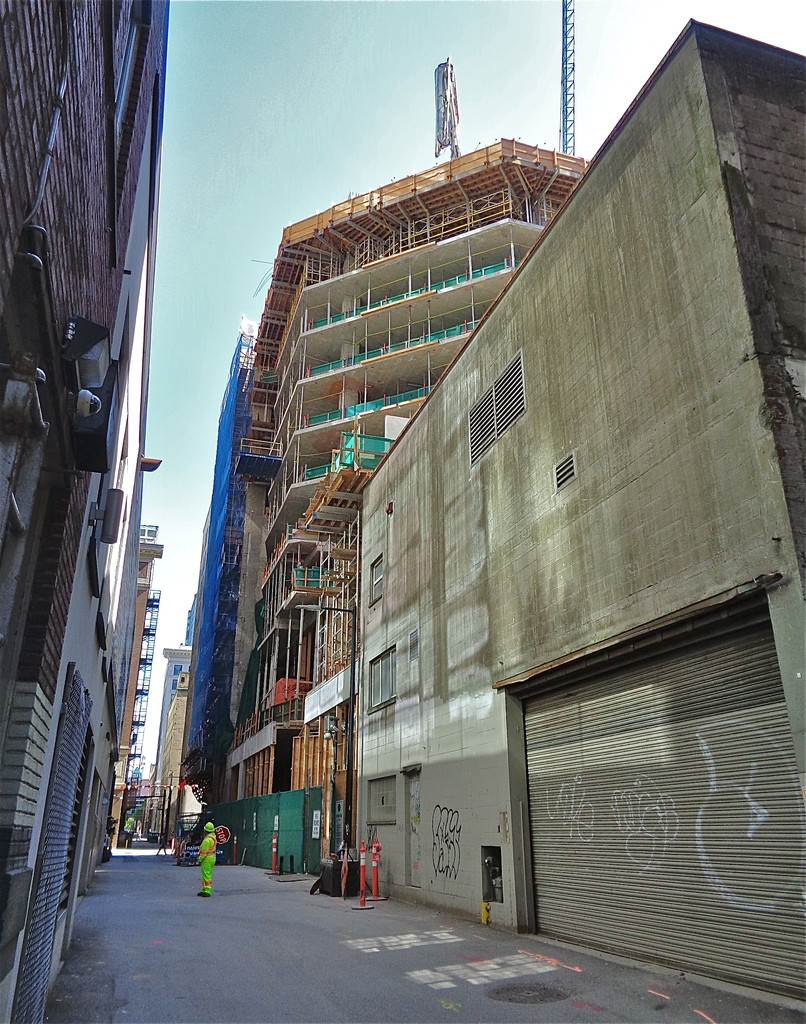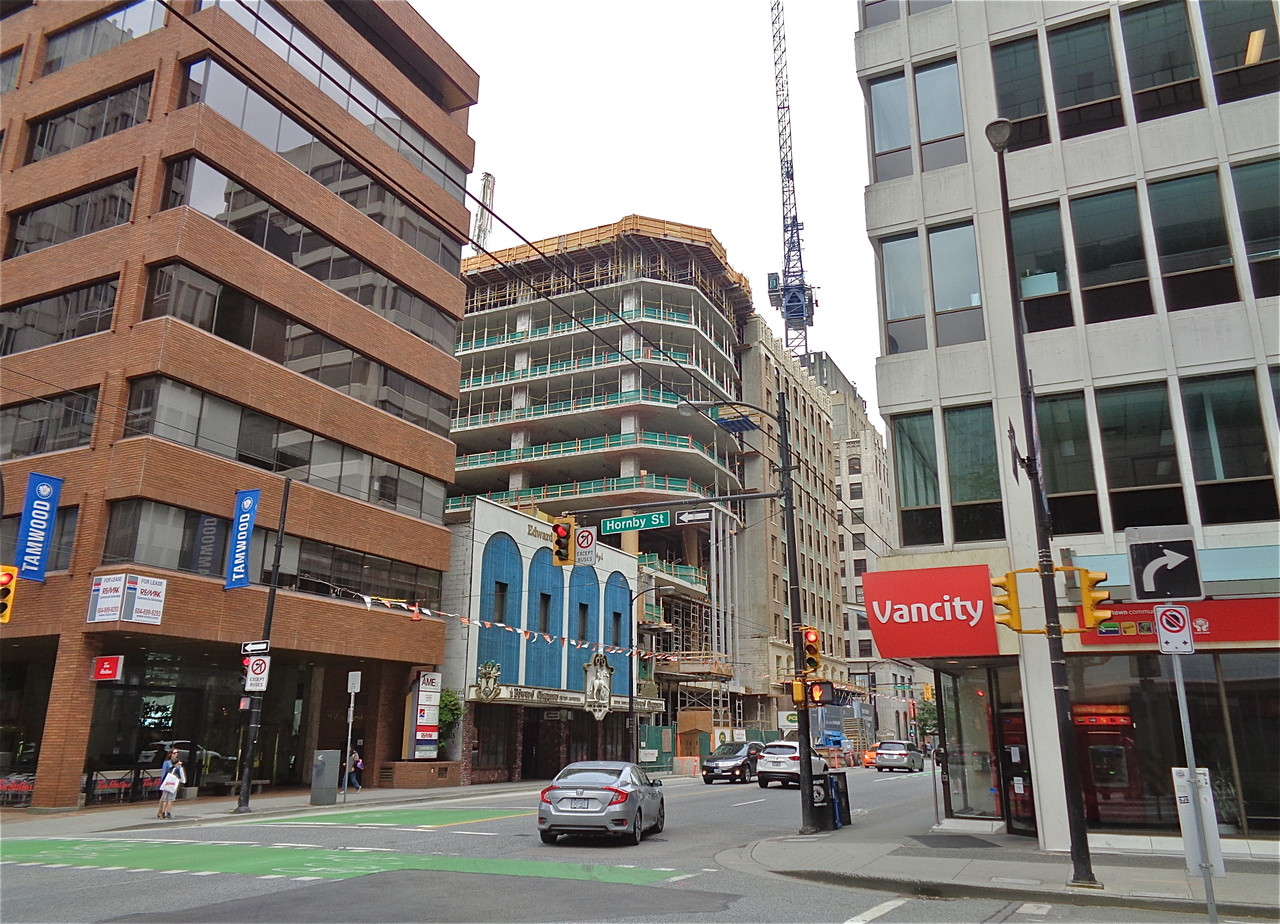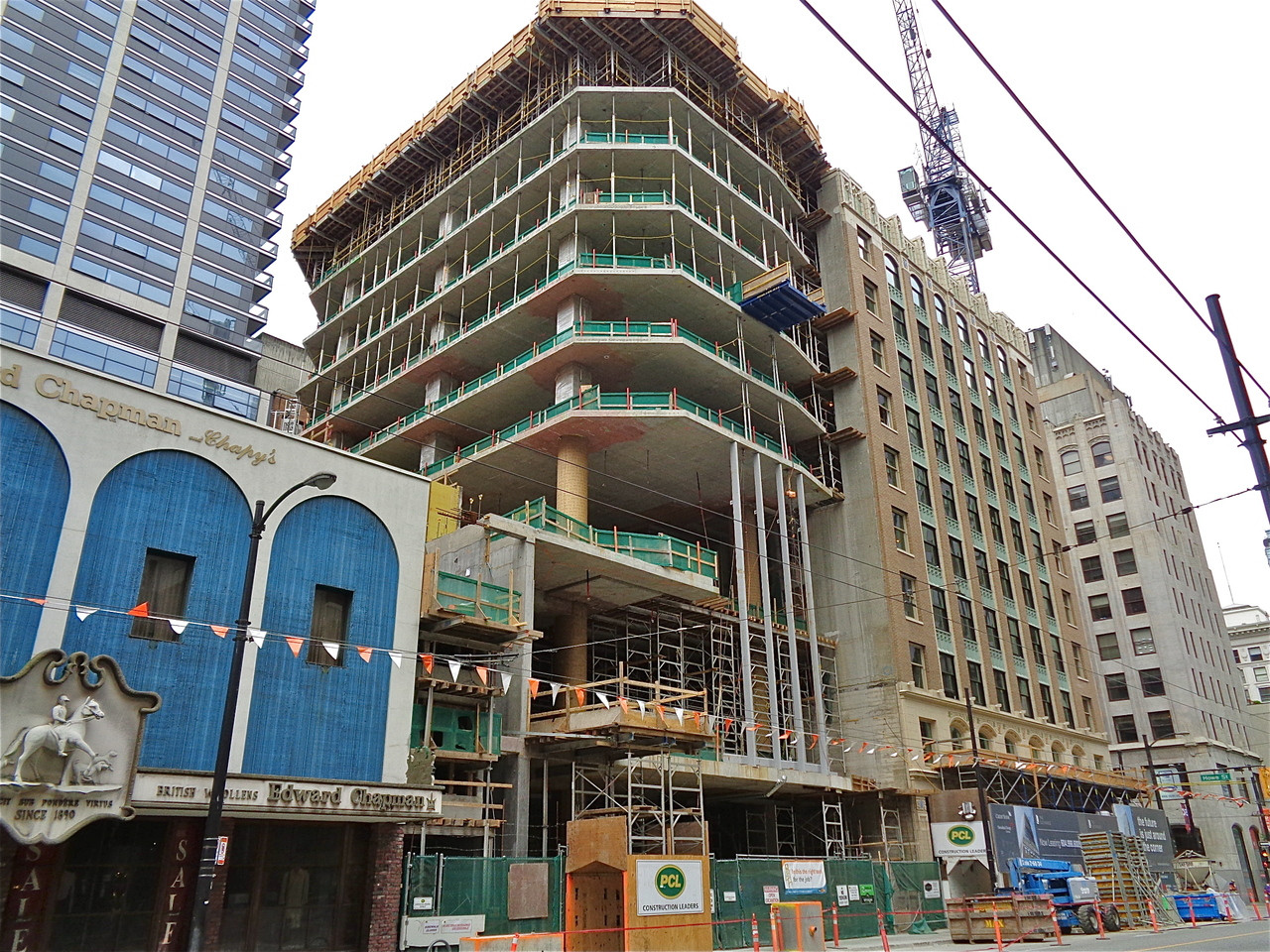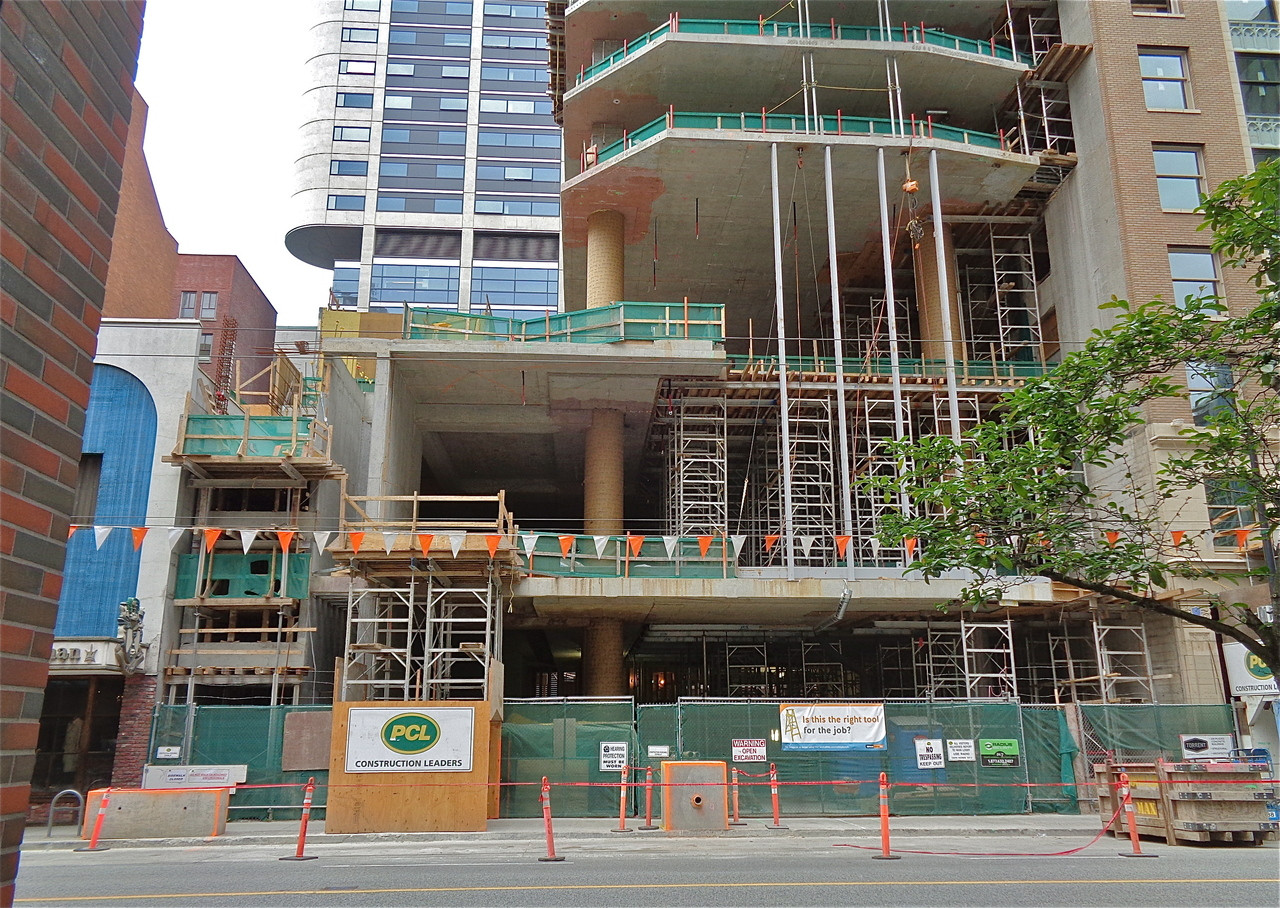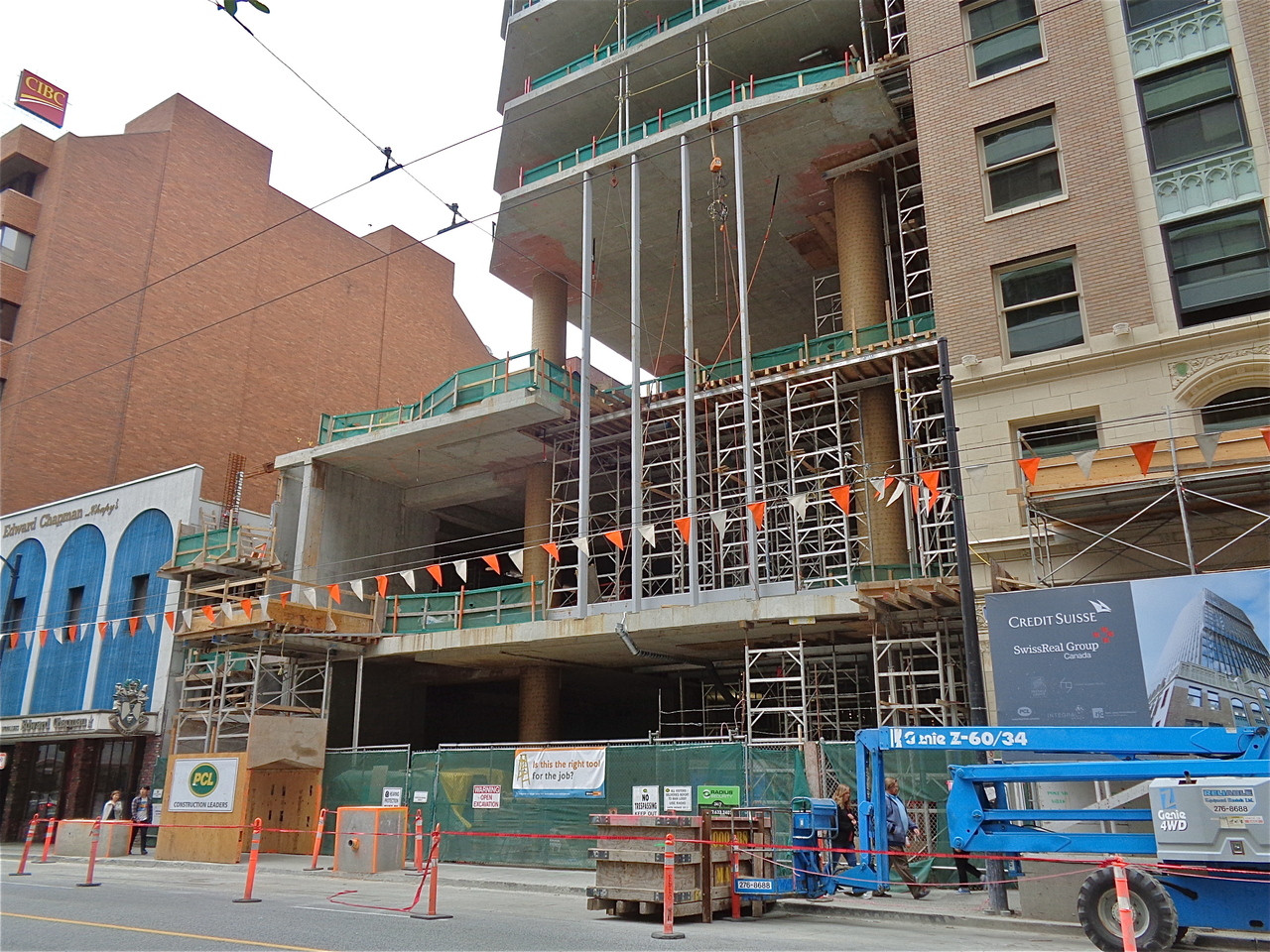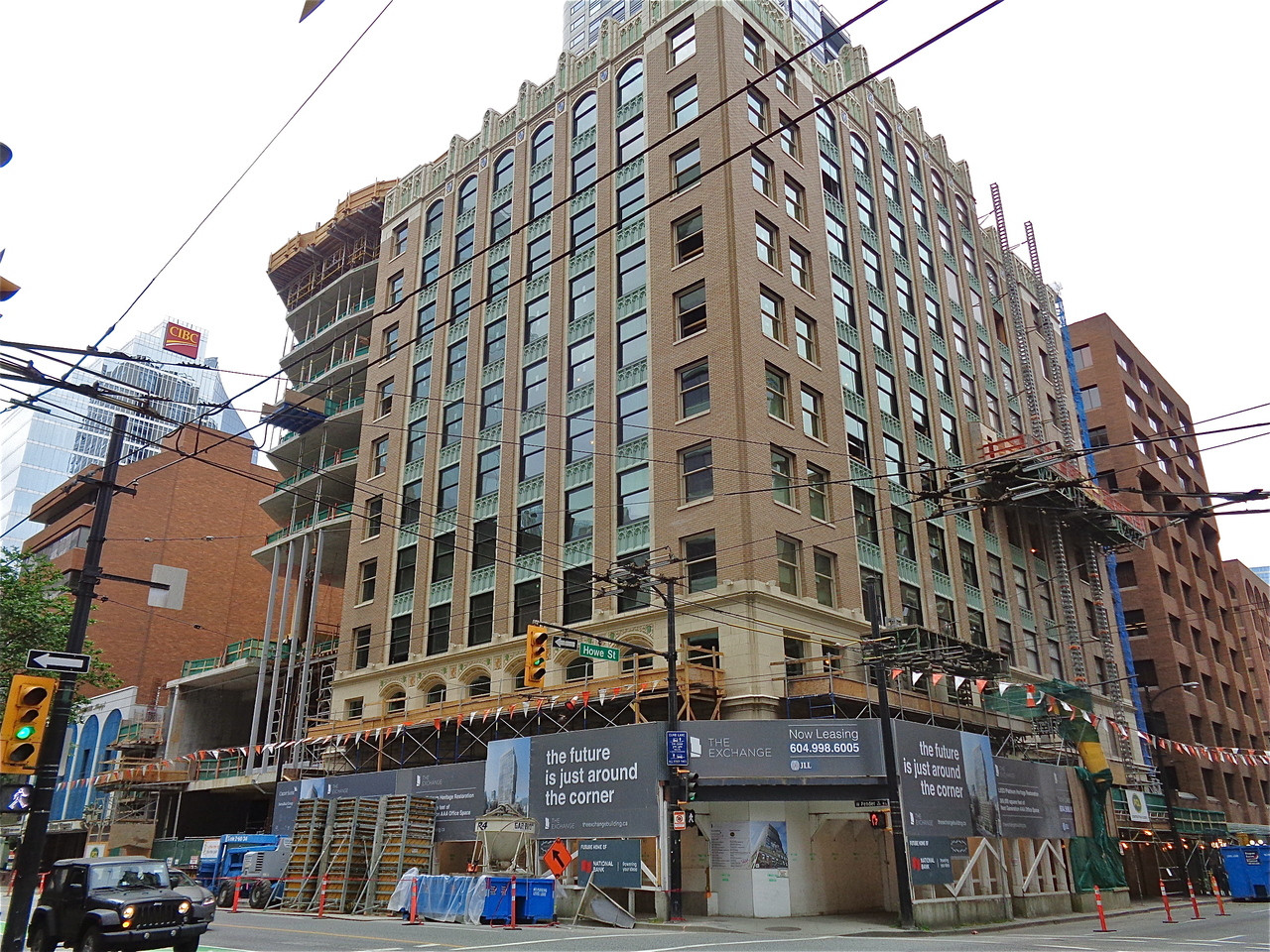Vancouver | The Exchange
You are using an out of date browser. It may not display this or other websites correctly.
You should upgrade or use an alternative browser.
You should upgrade or use an alternative browser.
- Thread starter SRC Admin
- Start date
anonymous0024
Active Member
Didn't get a shot of the progress on the construction of the addition, but it's almost at grade now.
369,000 sq ft of office space, with National Bank taking 45k as the lead tenant.
Developer is the SwissReal Group, architect is Harry Gugger
From today:


And a close up of the render:

369,000 sq ft of office space, with National Bank taking 45k as the lead tenant.
Developer is the SwissReal Group, architect is Harry Gugger
From today:


And a close up of the render:

mcminsen
Active Member
bennessb
editor at large
@mcminsen, you inspired us to take a look at this project on the front page!
mcminsen
Active Member
mcminsen
Active Member
mcminsen
Active Member
Froggy
Active Member
Oh it looks good!
bennessb
editor at large
cool detail.Looks like they are testing some lights on the heritage building facade.
mcminsen
Active Member
Here are some interesting excerpts from a Business In Vancouver article. It helps explain the slowness of construction as they build a new tower up and through the old one.
**********************
Engineering heritage restoration merges future, past
The Exchange tower is one of several restorations of historic B.C. buildings underway
By Glen Korstrom
Architects and engineers involved in the Exchange tower project are doing far more than simply keeping the building’s facade. Instead, they are completely restoring the original building.
They are also linking floors so that people who are on one of the restored building’s L-shaped, 10,000-square-foot floors will be able to walk seamlessly into the new tower. Floors in the combined new tower will have twice that square footage.
The part of the floor that is in the old building will gain stability from being attached to the new building, explained Leslie Peer, a partner at Read Jones Christoffersen Consulting Engineers, which is engineering the tower.
“There’s a sideways load, which is the wind load or the seismic load,” Peer said. “That creates a sideways or lateral force against the building.
“Most older buildings are deficient for seismic loads. What we’re doing is instead of putting a new lateral system into the existing building, we’re tying the existing building to the new building so the lateral loads are taken down.”
The existing building will keep its original elevator shafts in what was its centre.
The new combined building’s elevator shaft and stairwell core is being built to a much higher standard than the one in the restored original building. Not only is the new building’s core sufficient to hold up the new tower, it is also sufficient to provide lateral support for the existing building.
Extra support in the combined building comes from thicker walls in its elevator and stairwell core. Those walls are made out of high-strength concrete and extra rebar.
Because the new building towers directly above the old building starting at the 11th floor, other adjustments were also necessary.
“There’s a new set of columns coming down through the existing building to take the dead loads [of weight] from the new tower,” Peer said.
**********************
Engineering heritage restoration merges future, past
The Exchange tower is one of several restorations of historic B.C. buildings underway
By Glen Korstrom
Architects and engineers involved in the Exchange tower project are doing far more than simply keeping the building’s facade. Instead, they are completely restoring the original building.
They are also linking floors so that people who are on one of the restored building’s L-shaped, 10,000-square-foot floors will be able to walk seamlessly into the new tower. Floors in the combined new tower will have twice that square footage.
The part of the floor that is in the old building will gain stability from being attached to the new building, explained Leslie Peer, a partner at Read Jones Christoffersen Consulting Engineers, which is engineering the tower.
“There’s a sideways load, which is the wind load or the seismic load,” Peer said. “That creates a sideways or lateral force against the building.
“Most older buildings are deficient for seismic loads. What we’re doing is instead of putting a new lateral system into the existing building, we’re tying the existing building to the new building so the lateral loads are taken down.”
The existing building will keep its original elevator shafts in what was its centre.
The new combined building’s elevator shaft and stairwell core is being built to a much higher standard than the one in the restored original building. Not only is the new building’s core sufficient to hold up the new tower, it is also sufficient to provide lateral support for the existing building.
Extra support in the combined building comes from thicker walls in its elevator and stairwell core. Those walls are made out of high-strength concrete and extra rebar.
Because the new building towers directly above the old building starting at the 11th floor, other adjustments were also necessary.
“There’s a new set of columns coming down through the existing building to take the dead loads [of weight] from the new tower,” Peer said.

